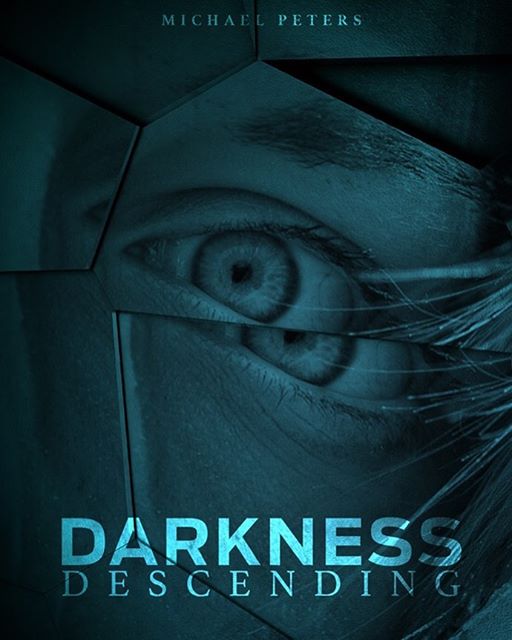The scratching noise is first detected by Edgar at 8:17 P.M.
He knows this because the scratching noise comes from behind the kitchen wall clock, and he is forced to remove it for investigation purposes.
Silence greets him as he does.
Perplexed, Edgar runs his hands through his frazzled hair.
There was something behind that wall.
Probably a rat or something.
He returns the clock to its original positioning.
Edgar turns away and walks to the entranceway leading to the living room.
A low scratching noise emanates from behind him , and Edgar turns abruptly to discern its whereabouts.
Remaining still, and breathing as slow as possible, Edgar listens intently .
The noise is coming from behind the clock again.
Walking gently, Edgar returns to the wall clock, removes it, and presses his ear up against the wall.
The sound is low but very distinct.
Edgar curls his hand into a fist and bashes the wall with the side of it.
To be safe, he does it three more times.
Remaining quiet, he returns his ear to the wall.
A low hissing sound arises from the other side, and then the scratching resumes.
With anger arising within him, he begins to hammer the wall repeatedly with aggressive force.
But with every pound, the scratching increases in intensity.
There are wires behind there and you’re going to chew through them, aren’t you, you little prick, Edgar thinks to himself.
Edgar turns to walk away, and a loud antagonistic hiss bids him farewell.
Furious now, Edgar walks to the kitchen door leading to the garage.
Opening it, he goes outside to retrieve his sledgehammer.
Once back in the house, he walks with a sense of purpose to the spot of the sound, and without hesitation begins to bash through it with heated aggression.
After four or five forceful smashes, the wall breaks free leaving a giant hole.
Edgar shoves his head through it but encounters no living entity.
Confused, he returns his entire body to the kitchen.
Staring at it, he begins to think that he may have been a tad overzealous with his violent actions.
Now how much was this going to cost him to fix?
In deep contemplation, he detects another scratching sound…this time coming from the living room.
Walking steadily, he walks into the living room, passing the turned over family pictures on the cabinet, and stops dead in the middle of the room…listening.
The sounds arises from the ceiling directly above him.
Dropping the sledgehammer to the ground, he turns and walks back towards the door leading to the garage.
Once inside, he grabs a step ladder and returns to the middle of the living room.
Propping it up, he picks up the sledgehammer and quietly ascends the ladder steps.
He detects a snickering sound from the other side of the ceiling, and without any thought to the consequences, he begins to drive the weapon upwards with destructive force.
After four or five blows, and with plaster raining down from above, a large jagged hole emerges.
Cautiously sticking his head through it, Edgar begins to look around once inside.
Nothing is visible.
Removing his cell phone, he flips on the flashlight app and shines it around the darkened enclosure.
Nothing.
Breathing heavily, Edgar descends the ladder stairs.
There is plaster all over the newly chipped hard wood floors.
You’re not escaping me, thinks Edgar.
A low laughing sound is heard from the garage.
Now I got you.
Walking past the overturned family portraits with the sledgehammer still in hand, Edgar makes his way out into the garage.
Stopping suddenly, he hears the snickering arising from inside his SUV.
He tries the door handle…
Locked.
The keys were upstairs in the bedroom…the one he once shared.
Not wanting to waste any time, Edgar raises the sledgehammer above his head and begins to smash through the SUV’s windshield.
Pounding it with such aggressive force provides very little hope for the life of the glass.
Within seconds, it caves away. Thrusting his head through it, he scans the interior of the car.
Nothing.
Pulling his head upwards, he listens to the sounds of the garage.
With his heart beating fast and his blood pressure now raised to dangerous levels, Edgar has grown frustrated.
Why can’t I find this stupid rat?
A scratching sound arises from within the kitchen.
Gritting his teeth, he walks back into the room with his sledgehammer ready for attack.
The sound comes from the behind the stove.
Smiling, he returns to the garage to retrieve his hacksaw.
Upon his re-entrance to the kitchen, he walks to the stove, grabs the back of it with both hands and pulls it a few feet out from the wall. Locating the gas line located at the back of it, he readies his weapon.
Using the hacksaw, he punctures it.
Continuing to smile, he walks back into the garage and grabs a jerry can full of gasoline sitting in the corner.
He also picks up a book of matches from the shelf.
Returning to the punctured gas line, Edgar turns the can over and begins to pour gasoline onto it. Walking backwards, he exits the kitchen leaving a leaking gasoline trail before him. Making his way through the living room and out the front door, the trail lies splattered on the floor.
At about fifteen feet from the front of the house, he drops the can, strikes the match and drops it onto the trail leading into the house.
He turns and runs to the street located thirty feet from his front door.
It doesn’t take long.
As he turns his body back towards the house, he spares himself just enough time to witness the destruction.
The once darkened sky is now a ball of orange, red and yellow.
The flames rise and rise, and the house begins to crumble.
The smile clings to Edgar’s face.
He raises both arms up towards the coloured sky, knowing he has finally claimed victory.








